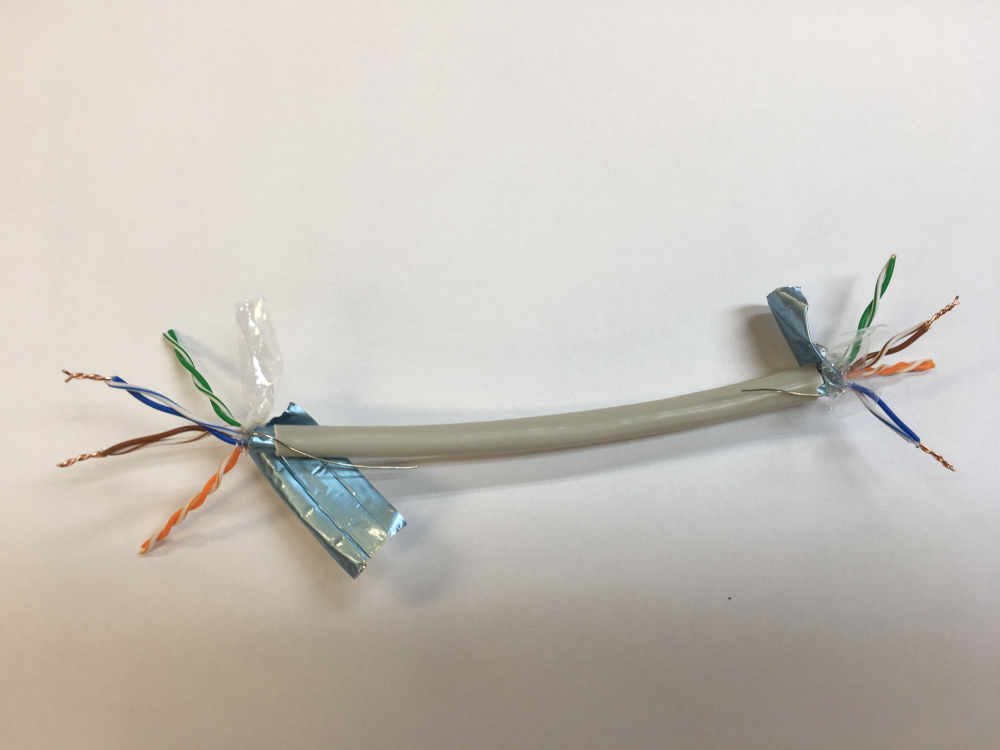5v cable
-
Have a panel with a Nextion 3.2" screen and a Wemos D1. I need about 5m cable to feed this with 5v. Would it work with an network cable or phone cable or would this be too thin?
@dragon according to https://nextion.itead.cc/resources/datasheets/nx4024k032_011/ the screen uses 85mA at full power. According to the same page, the minimum voltage is 4.75V.
From http://oberoninc.com/images/WebDocs/Partner_Resources/IEEE 802_3af PoE document.pdf I found this:
Typical Cat5e UTP has a 10ohm/100m conductor resistance
So 5m of cat5e utp network cable would have 0.5 ohm resistance one-way, so 1 ohm there and back.
The voltage drop for 85mA through a 1 ohm cable is 1 * 0.085 = 0.085V.
So if you feed 5V to the cable, 0.085V will be lost in the cable and 4.915V will be available to the screen. This is more than the minimum required for the screen, so the cable will work.
If the wemos needs to be powered through the cable as well, you'll need to add the power usage for the wemos to the calculations above.
-
@dragon according to https://nextion.itead.cc/resources/datasheets/nx4024k032_011/ the screen uses 85mA at full power. According to the same page, the minimum voltage is 4.75V.
From http://oberoninc.com/images/WebDocs/Partner_Resources/IEEE 802_3af PoE document.pdf I found this:
Typical Cat5e UTP has a 10ohm/100m conductor resistance
So 5m of cat5e utp network cable would have 0.5 ohm resistance one-way, so 1 ohm there and back.
The voltage drop for 85mA through a 1 ohm cable is 1 * 0.085 = 0.085V.
So if you feed 5V to the cable, 0.085V will be lost in the cable and 4.915V will be available to the screen. This is more than the minimum required for the screen, so the cable will work.
If the wemos needs to be powered through the cable as well, you'll need to add the power usage for the wemos to the calculations above.
@mfalkvidd that is what I call a great answer.
-
@mfalkvidd that is what I call a great answer.
-
@dragon according to https://nextion.itead.cc/resources/datasheets/nx4024k032_011/ the screen uses 85mA at full power. According to the same page, the minimum voltage is 4.75V.
From http://oberoninc.com/images/WebDocs/Partner_Resources/IEEE 802_3af PoE document.pdf I found this:
Typical Cat5e UTP has a 10ohm/100m conductor resistance
So 5m of cat5e utp network cable would have 0.5 ohm resistance one-way, so 1 ohm there and back.
The voltage drop for 85mA through a 1 ohm cable is 1 * 0.085 = 0.085V.
So if you feed 5V to the cable, 0.085V will be lost in the cable and 4.915V will be available to the screen. This is more than the minimum required for the screen, so the cable will work.
If the wemos needs to be powered through the cable as well, you'll need to add the power usage for the wemos to the calculations above.
and a simple 'trick' to allow higher currents if necessary:
A network cable has 8 leads in it. Any spare pair of leads not used for something else (e.g. data....) can be used to increase the current strength of the 5V and return (GND) line.

-
and a simple 'trick' to allow higher currents if necessary:
A network cable has 8 leads in it. Any spare pair of leads not used for something else (e.g. data....) can be used to increase the current strength of the 5V and return (GND) line.

-
:scream: doubling cable = doubling resistance = doubling voltage drop
.
.
.
.
:rolling_on_the_floor_laughing: sorry
don't throw stones at me, it's only a joke :raised_hand_with_fingers_splayed:
